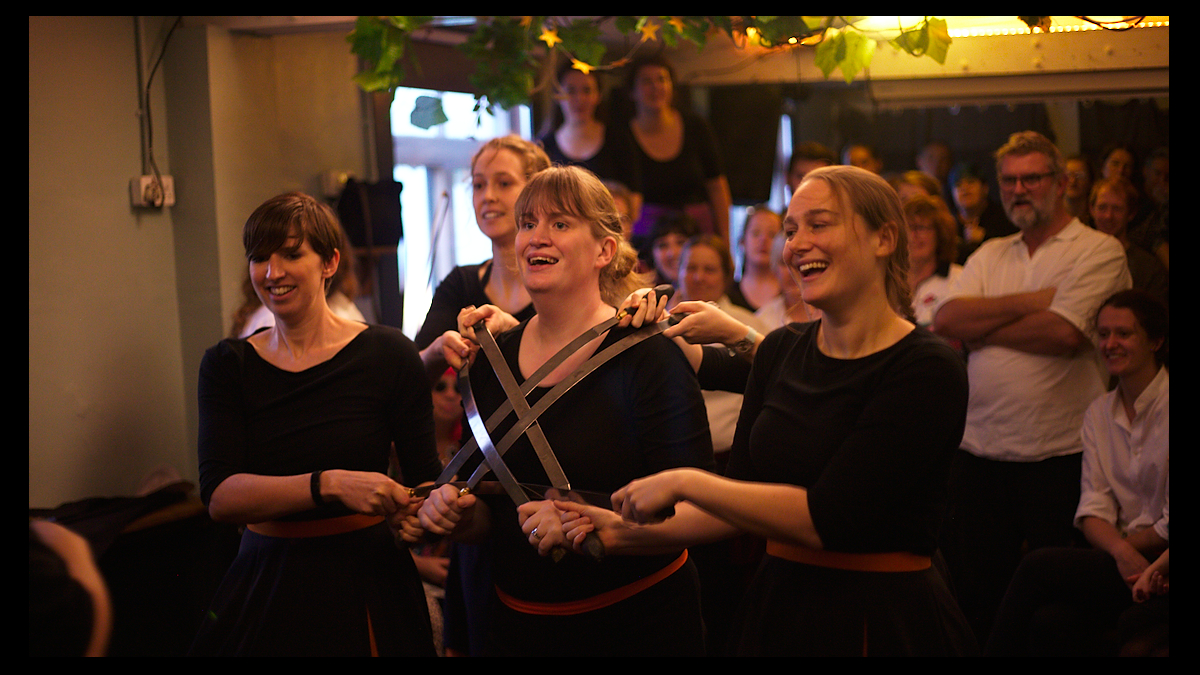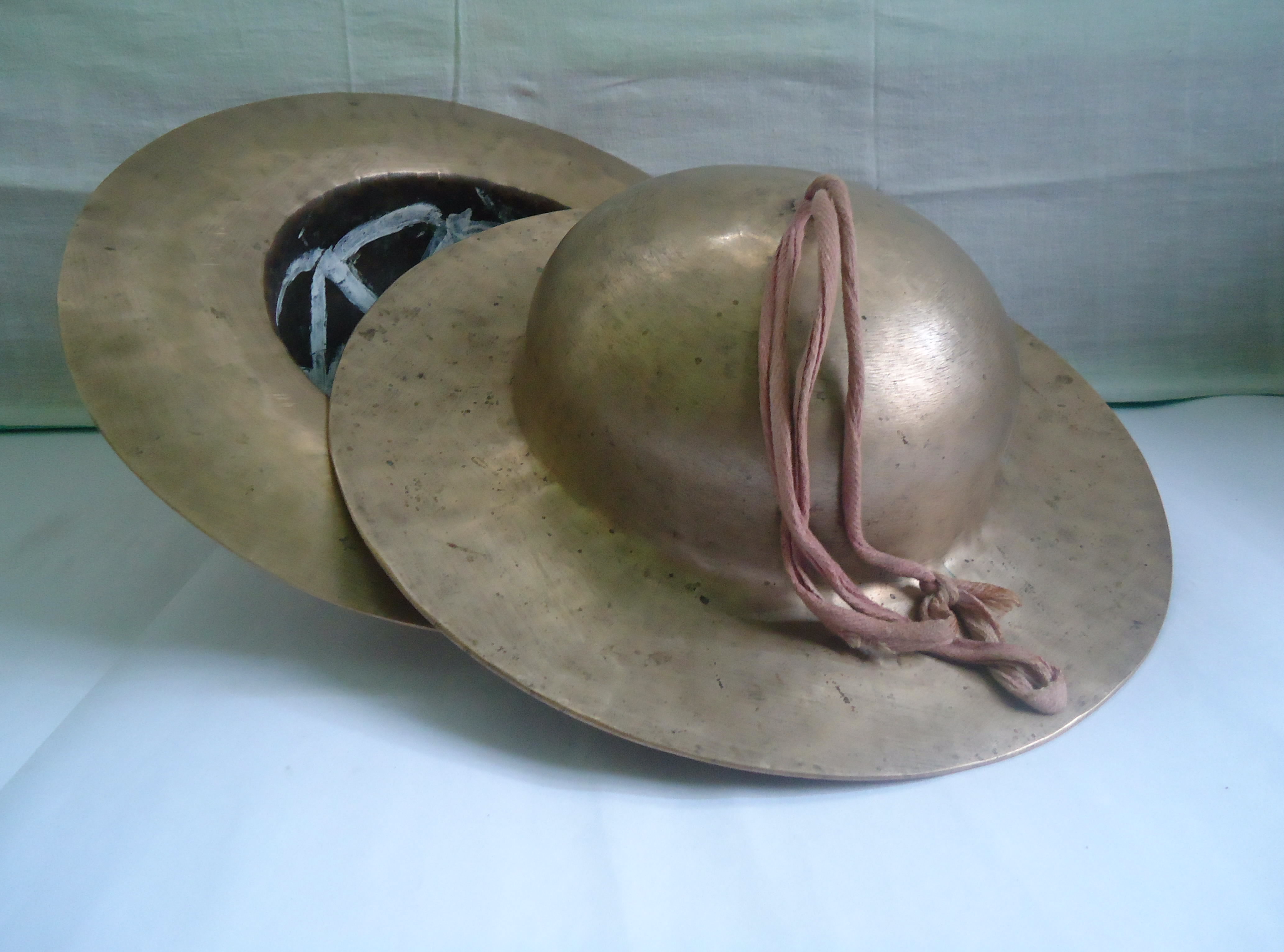|
Tippani Dance
Tippani is form of folk dance originated from the Veraval and Chorwad region of Saurashtra in Gujarat, India. Etymology ''Tippani'' is made of two long wooden stick of about 175 cm joined by a square wooden or iron block called ''Garbo'' at the lower end to make it stronger in opposite rows. It was used to press lime into the foundation of a house or floor in older times. The dance originated among laborers such as Koli community who broke the stones and leveled the ground who performed it to avoid monotony of the work. Dance The dance was performed exclusively by women. The women holding ''Tippani'' dance while beating the floor in two opposite rows accompanied by folk songs. ''Turi'' and ''Thali'' (brass plate) are used to create music. Zanz, Manjira, Tabla, Dhol and Shehnai The ''shehnai'' is a type of oboe from the Indian subcontinent. It is made of wood, with a double reed at one end and a metal or wooden flared bell at the other end. It was one of the nine instruments fou ... [...More Info...] [...Related Items...] OR: [Wikipedia] [Google] [Baidu] |
Folk Dance
A folk dance is a dance that reflects the life of the people of a certain country or region. Not all ethnic dances are folk dances. For example, Ritual, ritual dances or dances of ritual origin are not considered to be folk dances. Ritual dances are usually called "religious dances" because of their purpose. The terms "ethnic" and "traditional" are used when it is required to emphasize the cultural roots of the dance. In this sense, nearly all folk dances are ethnic ones. If some dances, such as polka, cross ethnic boundaries and even cross the boundary between "folk" and "ballroom dance", ethnic differences are often considerable enough to mention. Background Folk dances share some or all of the following attributes: *Dances are usually held at folk dance gatherings or social functions by people with little or no professional training, often to traditional music. *Dances not generally designed for public performance or the stage, though they may later be arranged and set for ... [...More Info...] [...Related Items...] OR: [Wikipedia] [Google] [Baidu] |
Veraval
Somnath, also known as Veraval, is a city and the headquarters of Gir Somnath district in the Indian States and territories of India, state of Gujarat. Somnath temple, a place of pilgrimage due to its importance as one of the 12 Jyotirlinga sites dedicated to the Hindu deity Shiva, is located here. It is also known for the hub of fishing industries in India. History Veraval was founded in the 13th or 14th century by Rao Veravalji Vadher, a Rajput. Its present name is believed to be derived from its old name "Velakul" meaning Port City. Veraval was once a fortified port town of the royal family of Junagadh. It was a part of the Kingdom of Junagadh till 1947 when Junagadh was merged with India. The city still bears some remnants of the old Nawabi heritage, the Nawabi summer palace being among them. There are ruins of the old Nawabi fort and Nawabi gates in and around the place. The old walls of the port are now ruined, but the impressive Junagadh gate and the Patan gate are st ... [...More Info...] [...Related Items...] OR: [Wikipedia] [Google] [Baidu] |
Chorwad
Chorwad or Chorvad is a town and a municipality in Junagadh district in the state of Gujarat, India. It lies on the coast of the Arabian Sea. Etymology It is said to have derived its name from being a notorious haunt of pirates. History Since the earliest times, Chorvad has been famous for its betel gardens, and the flavour of Chorvad betel is supposed to be very superior, and it is largely exported not only inland but also by sea. Chorvad was in ancient times a dependency of Mangrol. In later times, i. e. after the collapse of the Mughal power in the Saurashtra peninsula, it was seized on by the Raizadas, but we have no record of the exact date of such seizure ; but Sanghji or Singhji, the Raizada Garasia of Chorvad, took an active part in the internecine wars of the nineteenth century ; but he was killed in the battle of Malia fought between him and Aliya Hatti, and his descendants were much embarrassed as to how they should defray the arrears of the soldiery. As Rana Sul ... [...More Info...] [...Related Items...] OR: [Wikipedia] [Google] [Baidu] |
Saurashtra (region)
Kathiawar (), also known as Saurashtra, is a peninsula in the south-western Gujarat state in India, bordering the Arabian Sea and covering about . It is bounded by the Kutch district in the north, the Gulf of Kutch in the northwest, and by the Gulf of Khambhat in the east. In the northeast, it is connected to the rest of the state and borders on the low, fertile hinterland of Ahmedabad. It is crossed by two belts of hill country and is drained radially by nine rivers which have little natural flow aside from in monsoon months, thus dams have been built on some of these. Kathiawar ports have been flourishing centres of trade and commerce since at least the 16th century. It was formerly a state of India. Etymology and history The name Kathiawad seems to have been derived from the early settlements of Kathikas or Kathis who entered Gujarat from Sindh in early centuries of the Common Era. The name "Saurashtra" itself is from Sanskrit (, ), the vṛddhi form of (, ), deri ... [...More Info...] [...Related Items...] OR: [Wikipedia] [Google] [Baidu] |
Gujarat
Gujarat () is a States of India, state along the Western India, western coast of India. Its coastline of about is the longest in the country, most of which lies on the Kathiawar peninsula. Gujarat is the List of states and union territories of India by area, fifth-largest Indian state by area, covering some ; and the List of states and union territories of India by population, ninth-most populous state, with a population of 60.4 million in 2011. It is bordered by Rajasthan to the northeast, Dadra and Nagar Haveli and Daman and Diu to the south, Maharashtra to the southeast, Madhya Pradesh to the east, and the Arabian Sea and the Pakistani province of Sindh to the west. Gujarat's capital city is Gandhinagar, while its largest city is Ahmedabad. The Gujarati people, Gujaratis are indigenous to the state and their language, Gujarati language, Gujarati, is the state's official language. The state List of Indus Valley civilisation sites#List of Indus Valley sites discovered, ... [...More Info...] [...Related Items...] OR: [Wikipedia] [Google] [Baidu] |
Manjira
The ''taal'' or ''manjira'' (also spelled ''manjīrā'' or ''manjeera''), ''jalra'', ''karatala'', ''kartal'' or ''gini'' is a pair of clash cymbals, originating in the Indian subcontinent, which make high-pitched percussion sounds. In its simplest form, it consists of a pair of small hand cymbals. The word taal comes from the Sanskrit word ''Tālà'', which literally means a clap. It is a part of Indian music and culture, used in various traditional customs e.g. Bihu music, Harinaam etc. It is a type of Ghana vadya. In Hindu religious contexts it is known as ''karatala'' (; ''kara'' "hand", "arm" and ''tāla'' "rhythm", "beat"), typically used to accompany devotional music such as bhajan and kirtan. They are commonly used by Hare Krishna devotees when performing '' harinam'', but are ubiquitous to all Hindu devotional music. It is also called ''karatala'' or ''kartal'' (pronounced as “kartel”) in some contexts. Types There are many types of Taal, categorised by si ... [...More Info...] [...Related Items...] OR: [Wikipedia] [Google] [Baidu] |
Tabla
A ''tabla'' is a pair of hand drums from the Indian subcontinent. Since the 18th century, it has been the principal percussion instrument in Hindustani classical music, where it may be played solo, as an accompaniment with other instruments and vocals, or as a part of larger ensembles. It is frequently played in popular and folk music performances in India, Bangladesh, Afghanistan, Pakistan, Nepal and Sri Lanka.Tabla Encyclopædia Britannica The tabla is an essential instrument in the bhakti devotional traditions of Hinduism and Sikhism, such as during ''bhajan'' and ''kirtan'' singing. It is one of the main qawwali instruments used by Sufi musicians. The instrument is also featured in dance performances such as Kathak. Tabla is a rhythmic instrument. The word ''tabla'' likely comes from ''tabl'', the Arabic word for drum. [...More Info...] [...Related Items...] OR: [Wikipedia] [Google] [Baidu] |
Dhol
Dhol () can refer to any one of a number of similar types of double-headed drum widely used, with regional variations, throughout the Indian subcontinent. Its range of distribution in Indian subcontinent primarily includes northern areas such as the Jammu division, Jammu, Himachal Pradesh, Himachal, Punjab region, Punjab, Haryana, Delhi, Kashmir, Sindh, Assam Valley, Uttarakhand, West Bengal, Odisha, Gujarat, Maharashtra, Konkan, Goa, Karnataka, Rajasthan, Bihar, Jharkhand and Uttar Pradesh. A related instrument is the dholak or dholki. ''Dhols'' are amongst other events used in Indian wedding ceremony processions such as Baraat or ''Varyatra''. Someone who plays the dhol is known as ''dholi''. Etymology The word Dhol is derived from Sanskrit word ''ḍhola,'' a term for drum in Sanskrit language. Construction The dhol is a double-sided barrel drum played mostly as an accompanying instrument in regional music forms. In Qawwali music, the term ''dhol'' is used to describe ... [...More Info...] [...Related Items...] OR: [Wikipedia] [Google] [Baidu] |
Shehnai
The ''shehnai'' is a type of oboe from the Indian subcontinent. It is made of wood, with a double reed at one end and a metal or wooden flared bell at the other end. It was one of the nine instruments found in the royal court. The shehnai is similar to South India's nadaswaram. Characteristics This tubular instrument gradually broadens towards the lower end. It usually has between six and nine holes. It employs one set of quadruple reeds, making it a quadruple reed woodwind. To master the instrument, the musician must employ various and intricate embouchure and fingering techniques. The shehnai has a range of two octaves, from the A below middle C to the A one line above the treble clef (A3 to A5 in scientific pitch notation). A shehnai is often but not always made with a body of wood or bamboo and a flared metal end. Origin of the shehnai The shehnai is thought to have been brought by the Mughal Empire as its use was most associated with the Mughal courts and it's sou ... [...More Info...] [...Related Items...] OR: [Wikipedia] [Google] [Baidu] |





